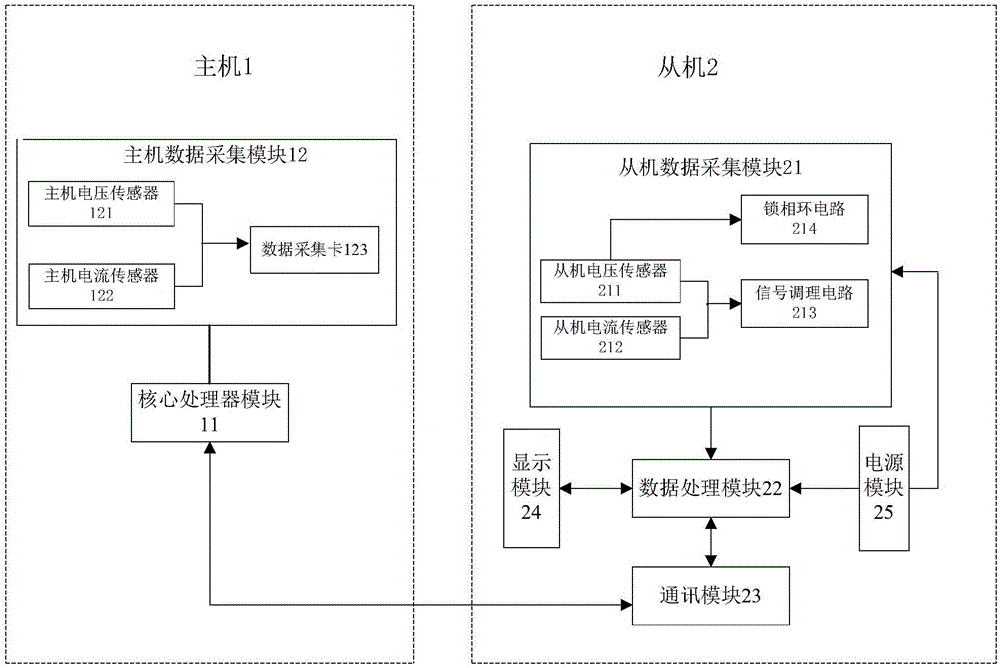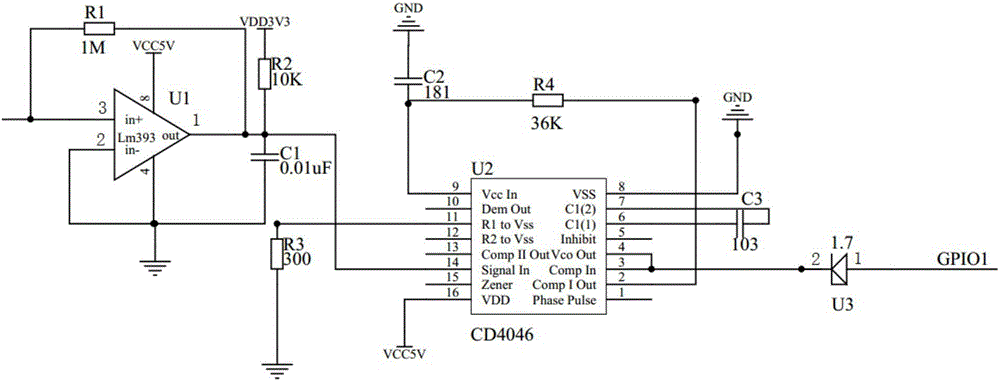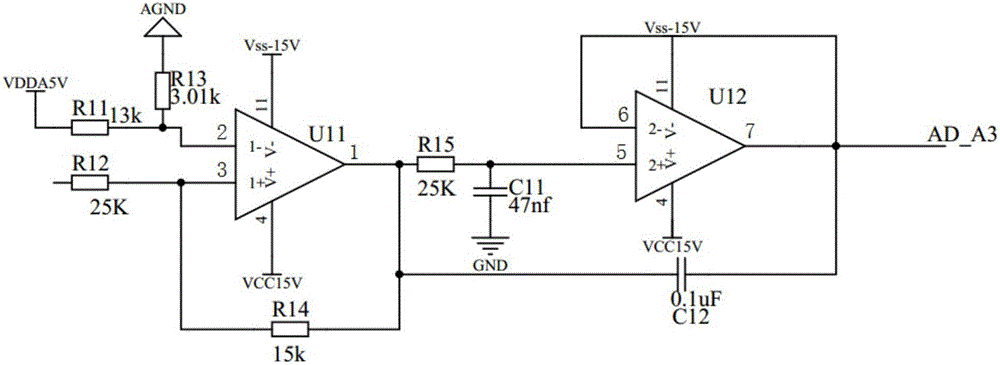Harmonic detection method and detection system based on frequency shift ensemble empirical mode decomposition
A technology of harmonic detection and acquisition module, applied in the direction of spectrum analysis/Fourier analysis, etc., can solve the problem that the high harmonics cannot be completely separated due to the frequency, so as to overcome the fluctuation of the power grid, expand the scope of application, and enhance the applicability Effect
- Summary
- Abstract
- Description
- Claims
- Application Information
AI Technical Summary
Problems solved by technology
Method used
Image
Examples
Embodiment 1
[0062] use figure 1 In the system, the signal source sends a voltage signal with an amplitude of 1V, a frequency of 50Hz fundamental wave and an amplitude of 0.5V, and a frequency of 150Hz as a superimposed voltage signal as a test signal, which is connected to the host data acquisition module 12 and the slave Data acquisition module 21. Since the signal source sends out a fixed frequency signal, there is no fluctuation effect, so the master and slave in the harmonic detection system are based on the power frequency of 50Hz.
[0063] The specific steps of the harmonic detection method based on frequency shift set empirical mode decomposition are (see Image 6 ):
[0064] Step 1): Collect data for 5 cycles, and perform EEMD decomposition on the data: In the harmonic detection system, both the host and the slave set the sampling frequency to 12800 Hz, and the number of sampling points for 5 cycles based on the power frequency of 50 Hz is 1280 points. The host computer collect...
Embodiment 2
[0067] use figure 1 In the system, the signal source sends a current signal with an amplitude of 1V, a frequency of 250Hz fundamental wave and an amplitude of 0.5V, and a frequency of 350Hz as a superimposed current signal as a test signal, which is connected to the host data acquisition module 12 and the slave Data acquisition module 21. Since the signal source sends out a fixed-frequency signal, there is no fluctuation effect, so the measured power frequency of the phase-locked loop circuit of the slave in the harmonic detection system is not used. Both the master and the slave are based on the power frequency of 50Hz. According to the decomposition condition of EEMD, two signals x 1 and x 2 The frequency ratio between is at least twice the relationship that f 1 ≥2f 2 , while satisfying the signal x 1 frequency f 1 with amplitude a 1 The product of needs to be greater than the signal x 2 frequency f 2 with amplitude a 2 the product of a 1 f 1 ≥a 2 f 2 . Accor...
Embodiment 3
[0079] use figure 1 In the system described above, the three-phase power is fed into the voltage regulator to output a voltage of 60V, and then the three-phase power passes through the three-phase rectifier bridge, and the load end of the rectifier bridge is connected to a resistor box with a resistance value of 20Ω, so that a 3A rectification signal will be generated. In the embodiment, the harmonic decomposition of the A-phase rectified signal is used as the test signal, which is connected to the master data acquisition module 12 and the slave data acquisition module 21 . The host sampling frequency is configured with a data acquisition card, the sampling frequency is 12800Hz, and 1280 points are collected; since this is directly connected to the power signal, the slave machine connects the A-phase voltage of the three-phase electric power signal to the slave machine in order to achieve a more accurate purpose. The phase-locked loop circuit, the output signal of the phase-lo...
PUM
 Login to View More
Login to View More Abstract
Description
Claims
Application Information
 Login to View More
Login to View More - R&D
- Intellectual Property
- Life Sciences
- Materials
- Tech Scout
- Unparalleled Data Quality
- Higher Quality Content
- 60% Fewer Hallucinations
Browse by: Latest US Patents, China's latest patents, Technical Efficacy Thesaurus, Application Domain, Technology Topic, Popular Technical Reports.
© 2025 PatSnap. All rights reserved.Legal|Privacy policy|Modern Slavery Act Transparency Statement|Sitemap|About US| Contact US: help@patsnap.com



